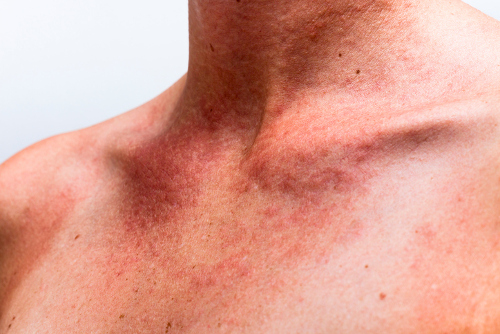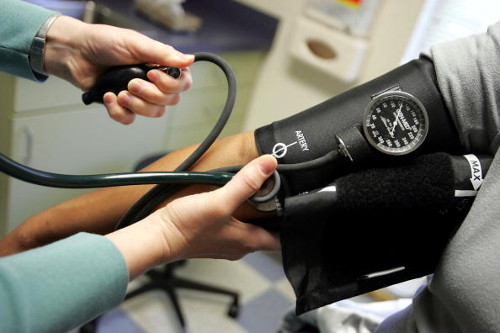 Red Man Syndrome, RMS, is the immune system’s adverse reaction to a given drug.
Red Man Syndrome, RMS, is the immune system’s adverse reaction to a given drug.
The condition appears as red blotches or rash on the skin and is commonly found on the back of the neck, giving it a reference name of Red Neck Syndrome. It can also appear on the face and upper body.
Although it is treatable, Red Man Syndrome can lead to various serious conditions that if left unnoticed or untreated, can have detrimental effects on a person.
It is vital to understand the causes, symptoms, and appropriate treatments for this reaction.
What Causes Red Man Syndrome?
There are several medications that can cause Red Man Syndrome. The antibiotic, vancomycin, is the prime cause of this reaction, which is one of the more serious side effects of the drug.
To be effective, vancomycin is usually administered by intravenous injection, and it is imperative that this be done slowly, over a 60-minute time period. If done too quickly, it can cause a mast cell degranulation, an inflammatory process in which certain cells release secretory granules in response to a perceived invasion. This results in a reaction such as Red Man Syndrome. This can also happen if vancomycin is taken orally.
Other antibiotic drugs that can cause Red Man Syndrome include teicoplanin, rifampicin, amphotericin B and ciprofloxacin. It can also appear with muscle relaxants and histamine-releasing medications as these drugs start producing the reaction.
Symptoms of Red Man Syndrome
Once symptoms appear, the drug treatment should cease and all measures are to be taken to stop the Red Man Syndrome. Sometimes these symptoms can go unnoticed. Signs to watch for include:
 Redness or rash on back of neck, arms, upper torso or face
Redness or rash on back of neck, arms, upper torso or face- Itchiness of the rash or red blotches
- Low blood pressure
- Rapid heartbeat
- Nausea or vomiting
- Fever or chills
- Hives
- Muscle weakness
Dizziness or fainting
The patient may also experience hypotension, angioedema, shortness in breath, or chest and back pains. These symptoms are not as common but need to be monitored for. As the patient becomes weaker, they may show signs of lack of appetite.
When do the Symptoms Occur?
Any of the symptoms can be present within four to 10 minutes once the vancomycin treatment begins. A patient may not show symptoms until after the infusion is completed. It should also be noted that each time the patient is exposed to the drug, it lessens the reaction time and changes the severity of the symptoms.
Some patients do not have a reaction until they have received several doses of the infusion or at the end of a slow infusion. In some cases, symptoms may not show for week after the vancomycin treatment.
Treatments for Red Man Syndrome
 The treatment and prevention of Red Man Syndrome go hand-in-hand as there are several options that will lessen some effects while preventing others when combined.
The treatment and prevention of Red Man Syndrome go hand-in-hand as there are several options that will lessen some effects while preventing others when combined.
Antihistamines are often administered to treat any effects or symptoms of the reaction.
To avoid a reaction to vancomycin and the Red Man Syndrome effects, some patients are given hydroxyzine before their infusion.
This medicine has also been shown to help lessen the itchiness and the redness in patients that experienced the effects. Some patients can also be treated with a gram of diphenhydramine before their first dose of vancomycin. This is usually given over an hour-long time period.
There are studies that successfully tested using a combination of a H1 receptor blocker and a H2 receptor blocker, such as cimetidine, to prevent Red Man Syndrome.
Red Man Syndrome is treated as a reaction or side effect rather than a diagnosis of a disorder. It is vital to observe a patient for the signs and symptoms of this particular syndrome after being administered specific antibiotic drugs, especially vancomycin. While the Red Man Syndrome can be treated, the symptoms can lead to serious health conditions if left unnoticed and not attended to immediately. This syndrome is not an allergic reaction, however, it is important that your doctor know of any drug allergies.
